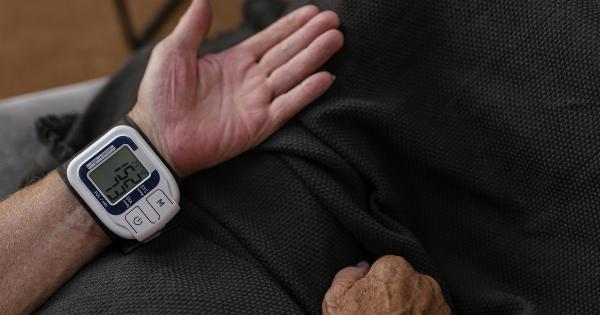Have you ever noticed that women seem to be more tolerant of the heat than men? It turns out that there are several factors that play into this phenomenon. Here are the top 30 reasons why women are easier to cool than men:.
1. Women Have a Lower Metabolic Rate
Metabolism is the process by which your body converts food into energy. Women typically have a lower metabolic rate than men, which means they produce less heat. This makes it easier for them to cool down.
2. Women Have a Smaller Body Size
On average, women are smaller than men. This means they have less body mass and less surface area to lose heat from, making it easier for them to cool down.
3. Women Have a Higher Body Fat Percentage
Women tend to have more body fat than men, which can act as insulation and help regulate body temperature. This means they are less likely to overheat in warm environments.
4. Women Have a Wider Range of Clothing Options
Women have a wider range of clothing options, including lighter fabrics and more breathable materials. This means they can adapt to different temperatures more easily than men.
5. Women Are Better Hydrated
Women tend to be more aware of their hydration levels and are more likely to drink enough water, which can help regulate body temperature.
6. Women Have a Higher Tolerance for Heat
Studies have shown that women have a higher tolerance for heat than men, meaning they can handle higher temperatures for longer periods of time.
7. Women Sweat More Efficiently
Women sweat more efficiently than men, which helps to cool the body down faster. This is due to the fact that women have more sweat glands per square inch of skin than men.
8. Women Have a Higher Surface-to-Volume Ratio
Women have a higher surface-to-volume ratio than men, which means they can lose heat faster. This is because heat is lost through the skin, so the larger the surface area of the body, the more efficiently heat can be lost.
9. Women Have a Lower Resting Heart Rate
Women have a lower resting heart rate than men, which means they can regulate their body temperature more efficiently.
10. Women are More Likely to Use Cooling Strategies
Studies have shown that women are more likely to use cooling strategies such as taking cold showers or drinking cold water to cool down.
11. Women Have a Lower Thermoregulatory Set Point
Women have a lower thermoregulatory set point than men, meaning their bodies are more sensitive to changes in temperature and can react faster to regulate body temperature.
12. Women Have a Higher Concentration of Heat-Shock Proteins
Heat-shock proteins help protect the body from the harmful effects of heat stress. Women have a higher concentration of these proteins, which can help them withstand higher temperatures.
13. Women Have a Better Sense of Smell
Women have a better sense of smell than men, which can help them detect changes in the environment, including temperature.
14. Women Are More Likely to Wear Sunscreen
Studies have shown that women are more likely to wear sunscreen, which can help protect the skin from the harmful effects of the sun and prevent overheating.
15. Women Have a Higher Pain Tolerance
Women have a higher pain tolerance than men, which means they can tolerate the discomfort caused by heat stress for longer periods of time.
16. Women Have a Higher Likelihood of Doing Yoga or Meditation
Yoga and meditation have been shown to have a positive effect on thermoregulation and can help women cool down more efficiently.
17. Women Have a Higher Resting Respiratory Rate
Women have a higher resting respiratory rate than men, which means they can eliminate heat through breathing more efficiently.
18. Women Have a Higher Nitric Oxide Production
Nitric oxide helps regulate blood flow and can help cool the body down. Women have been shown to have a higher production of nitric oxide than men.
19. Women Have Higher Melatonin Production
Melatonin is a hormone that helps regulate the body’s circadian rhythm, which can also affect body temperature regulation. Women have been shown to have higher melatonin production than men.
20. Women Have a Higher Pain Tolerance During Labor
During labor, women experience intense pain and high body temperature. Their ability to tolerate this discomfort shows their higher resilience to heat stress.
21. Women Have More Evaporative Cooling
Evaporative cooling is the process by which the body loses heat through the evaporation of sweat. Women have been shown to have more efficient evaporative cooling than men.
22. Women Have a Higher Heat-Dissipating Capacity
The ability to dissipate heat is critical for regulating body temperature. Women have been shown to have a higher heat-dissipating capacity than men.
23. Women Are More Prone to Raynaud’s Syndrome
Raynaud’s Syndrome is a condition where the blood vessels in the fingers and toes constrict in response to cold temperature, leading to a decrease in blood flow and increased risk of frostbite.
Women are more prone to this condition, which can affect their ability to regulate body temperature in cold environments.
24. Women Have a More Efficient Circulatory System
Women have been shown to have a more efficient circulatory system, which can help regulate body temperature. This is because the circulatory system plays an important role in distributing heat throughout the body.
25. Women Have a Higher Threshold for Pain
Studies have shown that women have a higher threshold for pain than men. This means they can tolerate the discomfort caused by heat stress for longer periods of time.
26. Women Have a Higher Basal Skin Temperature
Women have been shown to have a higher basal skin temperature than men, which means their skin is naturally warmer. This can help them better regulate body temperature in colder environments.
27. Women Have a More Active Parasympathetic Nervous System
The parasympathetic nervous system helps regulate several bodily functions, including heart rate and digestion. Women have been shown to have a more active parasympathetic nervous system, which can help them better regulate body temperature.
28. Women Are Less Likely to Smoke
Smoking has been shown to decrease lung function and increase the risk of respiratory problems, which can affect the body’s ability to regulate temperature.
Women are less likely to smoke than men, which means they may have better respiratory function.
29. Women Have a Lower Blood Pressure
Women have a lower blood pressure than men, which means their hearts don’t have to work as hard to pump blood throughout the body. This can help them regulate body temperature more efficiently.
30. Women Have a Higher Mental Resilience
Mental resilience is the ability to cope with stress and adversity. Women have been shown to have a higher level of mental resilience than men, which can help them better cope with the discomfort caused by heat stress.






























